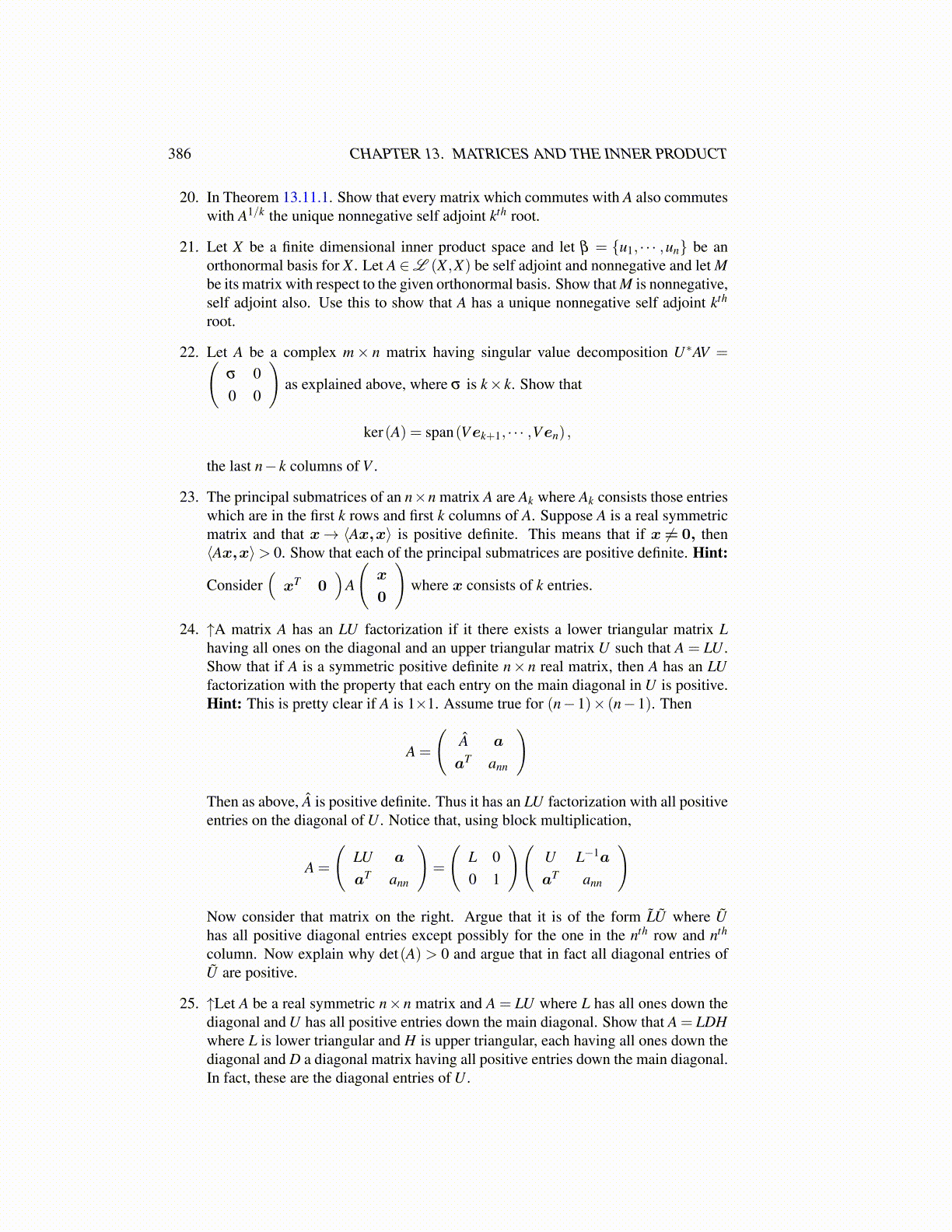
386 CHAPTER 13. MATRICES AND THE INNER PRODUCT
20. In Theorem 13.11.1. Show that every matrix which commutes with A also commuteswith A1/k the unique nonnegative self adjoint kth root.
21. Let X be a finite dimensional inner product space and let β = {u1, · · · ,un} be anorthonormal basis for X . Let A ∈L (X ,X) be self adjoint and nonnegative and let Mbe its matrix with respect to the given orthonormal basis. Show that M is nonnegative,self adjoint also. Use this to show that A has a unique nonnegative self adjoint kth
root.
22. Let A be a complex m× n matrix having singular value decomposition U∗AV =(σ 00 0
)as explained above, where σ is k× k. Show that
ker(A) = span(Vek+1, · · · ,Ven) ,
the last n− k columns of V .
23. The principal submatrices of an n×n matrix A are Ak where Ak consists those entrieswhich are in the first k rows and first k columns of A. Suppose A is a real symmetricmatrix and that x→ ⟨Ax,x⟩ is positive definite. This means that if x ̸= 0, then⟨Ax,x⟩> 0. Show that each of the principal submatrices are positive definite. Hint:
Consider(
xT 0)
A
(x
0
)where x consists of k entries.
24. ↑A matrix A has an LU factorization if it there exists a lower triangular matrix Lhaving all ones on the diagonal and an upper triangular matrix U such that A = LU .Show that if A is a symmetric positive definite n× n real matrix, then A has an LUfactorization with the property that each entry on the main diagonal in U is positive.Hint: This is pretty clear if A is 1×1. Assume true for (n−1)× (n−1). Then
A =
(Â a
aT ann
)
Then as above, Â is positive definite. Thus it has an LU factorization with all positiveentries on the diagonal of U . Notice that, using block multiplication,
A =
(LU a
aT ann
)=
(L 00 1
)(U L−1a
aT ann
)
Now consider that matrix on the right. Argue that it is of the form L̃Ũ where Ũhas all positive diagonal entries except possibly for the one in the nth row and nth
column. Now explain why det(A) > 0 and argue that in fact all diagonal entries ofŨ are positive.
25. ↑Let A be a real symmetric n×n matrix and A = LU where L has all ones down thediagonal and U has all positive entries down the main diagonal. Show that A = LDHwhere L is lower triangular and H is upper triangular, each having all ones down thediagonal and D a diagonal matrix having all positive entries down the main diagonal.In fact, these are the diagonal entries of U .